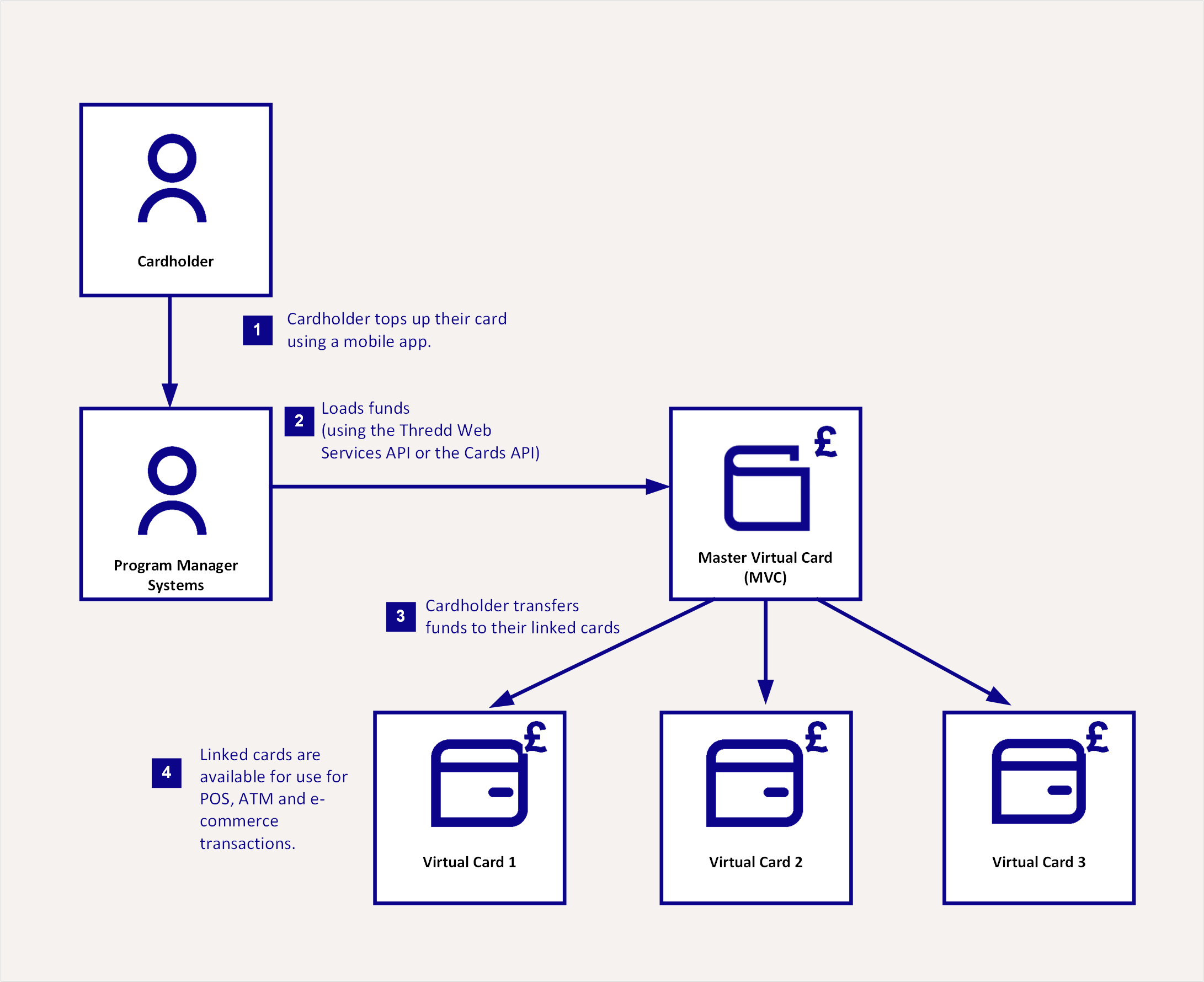Master Virtual Cards
A Master Virtual Card (MVC) is a type of master account card record that you can use to reflect money loaded into a cardholder's account. An MVC is ideal for programs where it is linked to multiple physical and/or virtual cards, as you can transfer money to any of those cards. The MVC card record is restricted to loading and unloading only, and cannot be used like a regular card.
You can create and manage MVCs using either SOAP web services or the Cards API. Most functions are available across both types of APIs, including, creating, loading and transferring balances.

Creating physical MVCs or performing any type of Point of Sale, e-commerce, ATM or other type of payment transactions are not possible with an MVC. In addition, your Issuer (BIN sponsor) must agree to allowing MVC cards for your program. This is because MVCs are cards with loads, and are included in the Transaction, Balance and other reports sent to you and your Issuer.
For more information, see the Master Virtual Cards Guide.
Funding of the MVC
An MVC is a type of prefunding account which allows the Program Manager to load an amount which is not yet assigned to any cardholder. Therefore, these are the funds of the Program Manager and are not counted as e-money.
The Program Manager controls the settlement account and is responsible for covering the actual money from the load into the Issuer's settlement account.
The Program Manager agrees with the Issuer on how they will be informed that funds have arrived in the Issuers Bank account (and by whom). They also agree on who is responsible for reflecting this value on the MVC.
Issuers maintain the following processes for managing MVCs:
-
They provide the Program Manager with “view access” to their accounts. This ensures that, when the actual funds are available in the Issuers Bank Account, the Program Manager can then reflect that e-money value on the MVC.
-
They advise the Program Manager when these funds are available so that the Program Manager can reflect the value on the MVC. This happens outside of Thredd and is between Program Manager and the Issuer to agree.